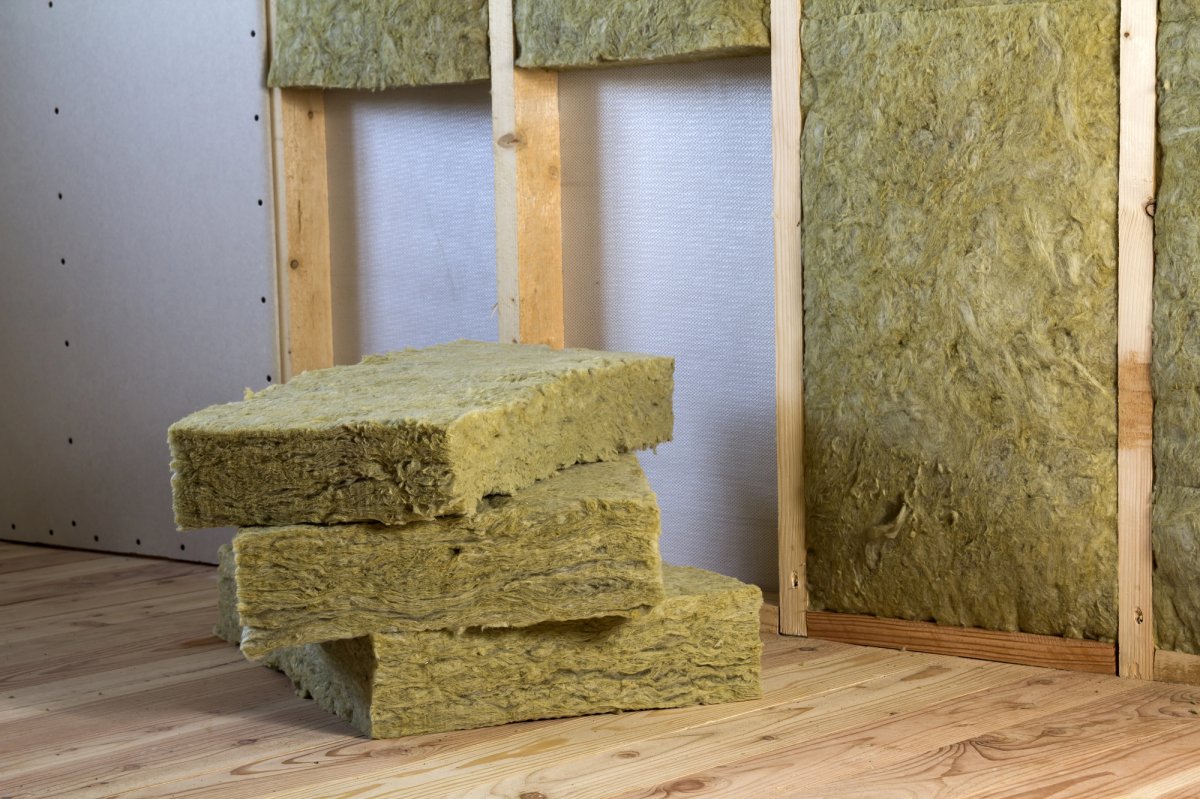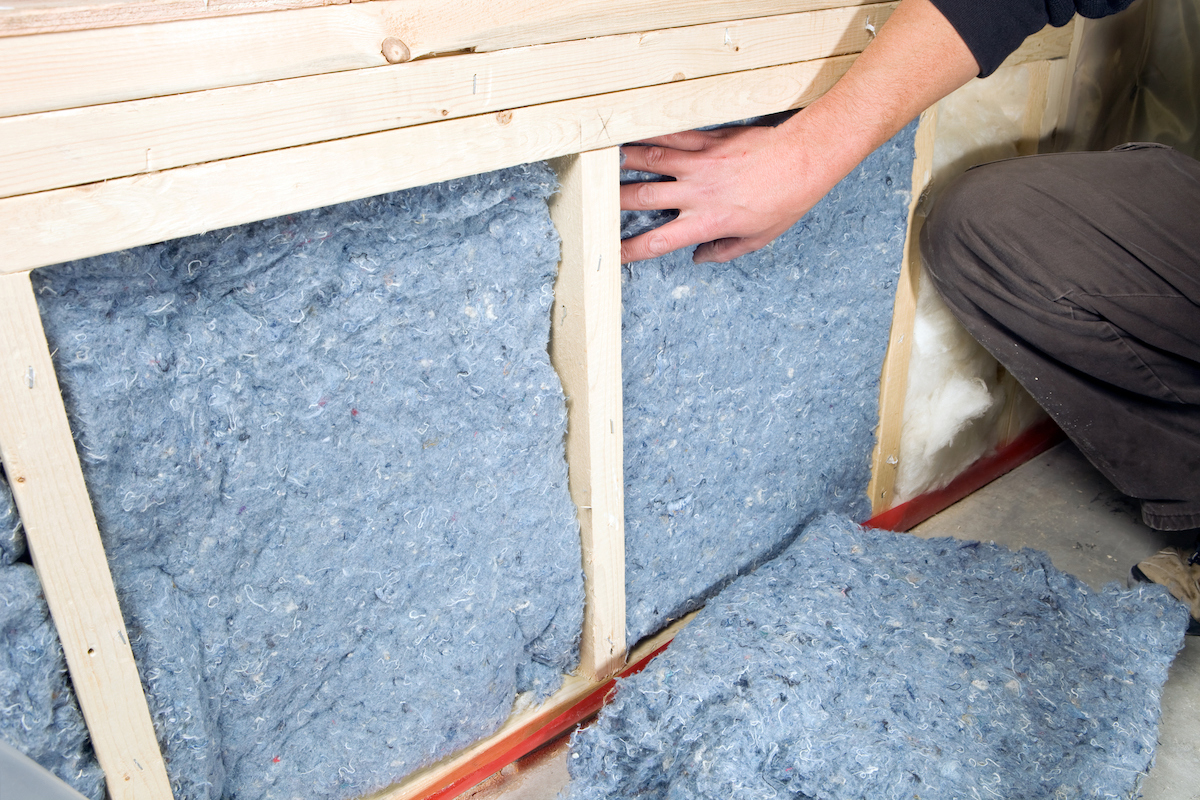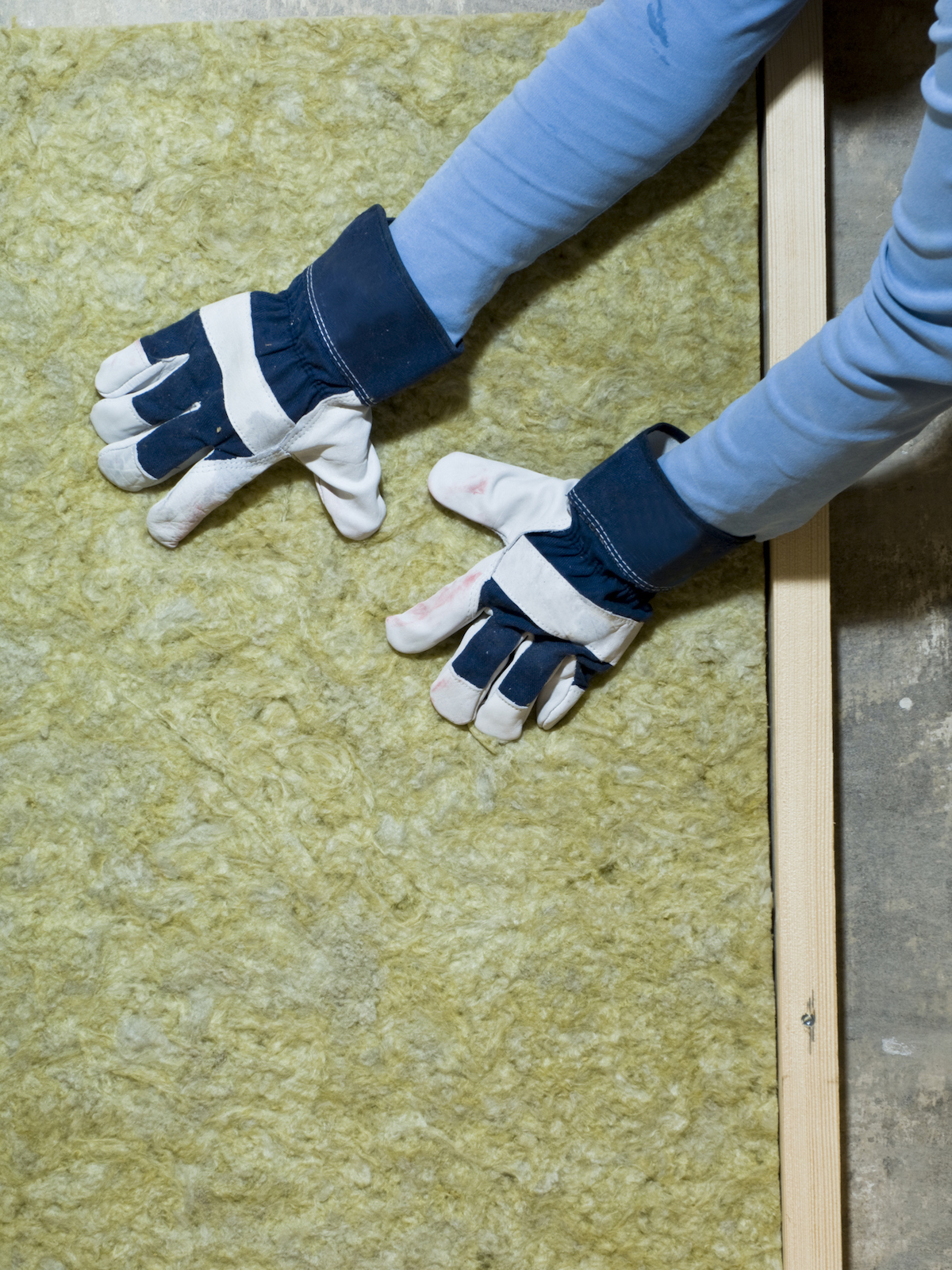

We may earn revenue from the products available on this page and participate in affiliate programs. Learn More ›
Comfort is essential at home, but that comfort is dependent on many different factors—one of the most important of which is the temperature inside the house. Heating and cooling systems help adjust indoor temperatures to address that, but they can’t do it alone. Without the right insulation R-values, hot and cold air alike can flow right through a home’s flooring, walls, ceilings, and attic. But what exactly is R-value, and what does it have to do with insulation?
What does R-value mean when it comes to insulation?
If the temperatures throughout the home seem inconsistent, you feel drafts near the walls, floors, or ceilings, or if the walls and floors feel cold, then the house may need more insulation or a different type of insulation with a higher R-value. The R-value of insulation is a measurement of how much heat resistance the material has per inch of depth, so even if the insulation R-value for one material is lower than it is for another, it may still provide adequate insulation if you use thicker layers.
The basic formula for R-value is:
R-value = temperature difference × area × time ÷ heat loss
Insulation R-value ratings can vary based on the type, thickness, and density of the insulation material. For home improvement work, standard insulation R-values range from R-10 to R-60, depending on where the insulation is installed and the location of the home. Check out this list of common home R-rating insulation values:
- R-13: Walls, floors, and crawl spaces
- R-15: Walls, floors, and crawl spaces
- R-19: Floors and crawl spaces
- R-21: Walls
- R-25: Floors and crawl spaces
- R-30: Attics, ceilings, floors, and crawl spaces
- R-38: Attics and ceilings
- R-49: Attics and ceilings
- R-60: Attics and ceilings

What R-values do I need in my home?
After gaining a basic understanding of insulation R-value, the next thing homeowners need to determine is how much insulation they need and what R-values are appropriate for their house. However, the insulation R-values necessary for your home depend on where the home is located and where the insulation will be installed in the home.
Chris Stevenson, Roofer and Sales Manager at 730 South Exteriors & Roofing, a Denver roofing company, notes that “In colder climates, you’ll need higher R-values to help keep the warmth in and protect against freezing outdoor temperatures. Warmer climates require insulation too, but the goal here is to prevent excessive heat buildup, so R-values may be a bit lower.”
You can quickly check the climate zone for your home with this detailed Energy Star map. Once you find your zone on the map, you can then use the R-value insulation chart below to determine the level of insulation you will need to insulate your attic, ceiling, walls, floor, and crawl space. Generally, zone one will require the least amount of insulation, while homes located in zone eight may need as much as R-60 insulation to safeguard the house.
| Climate Zone | Attic and Ceiling | Walls | Floors and Crawl Space |
| 1 | R-30 to R-49 | R-13 to R-15 | R-13 to R-15 |
| 2 | R-30 to R-60 | R-13 to R-19 | R-13 to R-19 |
| 3 | R-30 to R-60 | R-15 to R-21 | R-19 to R-25 |
| 4 | R-38 to R-60 | R-19 to R-21 | R-25 to R-30 |
| 5 | R-49 to R-60 | R-19 to R-21 | R-25 to R-30 |
| 6 | R-49 to R-60 | R-19 to R-21 | R-25 to R-30 |
| 7 | R-49 to R-60 | R-19 to R-21 | R-25 to R-30 |
| 8 | R-49 to R-60 | R-19 to R-21 | R-25 to R-30 |
Does R-value vary greatly between different types of insulation?
When you are insulating the home, it’s important to pay attention to the type of insulation you are using, not just due to the difference in cost, but also because different materials will generally have different R-values. For instance, when comparing spray foam insulation R-value vs. fiberglass insulation R-value, spray foam typically has the higher average R-value per inch.
If you aren’t sure which insulation material to use, it’s a good idea to consult with an insulation contractor to ensure you select the right option for your home based on the local climate, the area you will be insulating, and your budget. Consider this list of typical insulation materials and the average R-values per inch to get a better idea of which type of insulation to use for your house.
- Loose-fill or blown-in insulation: R-2.2 to R-3.5
- Batt insulation: R-3 to R-3.5
- Open cell spray foam insulation: R-3.5 to R-4
- Structural insulated panels: R-3.6 to R-7
- Rigid insulation boards: R-4 to R-6.5
- Closed cell spray foam insulation: R-5 to R-7

Can the installation process affect R-value?
Insulating the home from top to bottom is a good idea no matter where the house is located. Stevenson says that “attics generally require the highest R-values because heat rises, and without proper attic insulation, warmth escapes quickly. Floors, basements, and crawl spaces may need lower R-values but are still worth insulating.”
However, while haphazardly shoving some fiberglass insulation into the walls can provide some basic insulation for the home, the installation process can have a negative impact on the R-value of the insulation material. For example, if you compress two layers of insulation into a space intended for one layer, the R-value does not double. Similarly, even if a single layer of the attic insulation is compressed during installation, it will not be as effective as if it had the appropriate space. Keep this mind when purchasing insulation or hiring an insulation installation company.
FAQ About R-Values and Insulation
Adding too much insulation doesn’t negatively impact the efficiency or performance of the home, but it is generally considered a waste of money, since the extra insulation doesn’t make a significant difference. Take some time to determine the right R-value for the home based on the area of the home, the average climate, and the size of the space you will be insulating.
In most cases, the best time of the year to install insulation is during the spring or fall seasons, when the temperatures are moderate and the HVAC system doesn’t need to do as much work to maintain the temperature of the home.
The amount of insulation a home requires depends on several factors, including the local climate, the type of insulation, the size of the space, and the desired R-value. Work with an insulation contractor to determine the best type of insulation and the right amount of insulation for the home.
